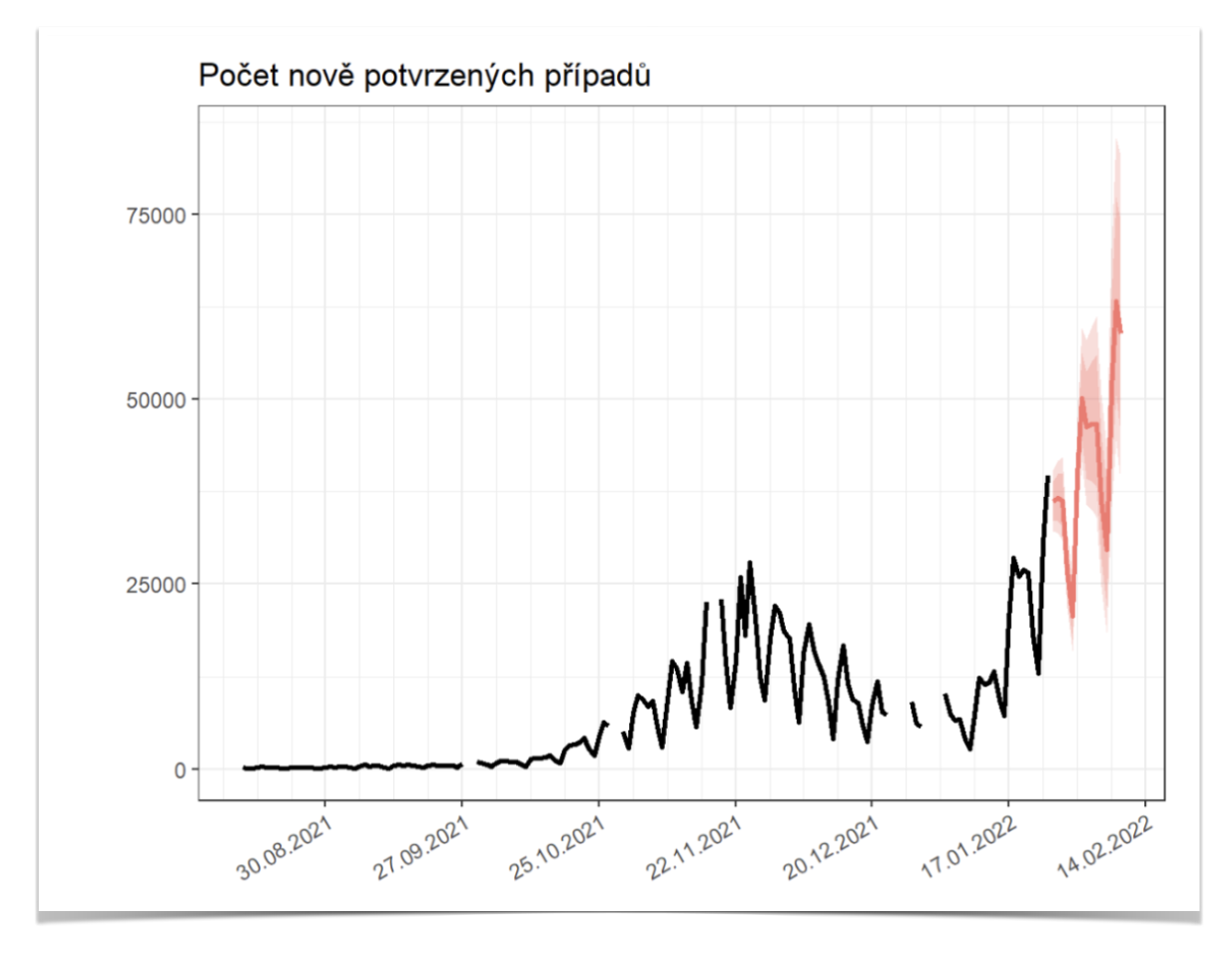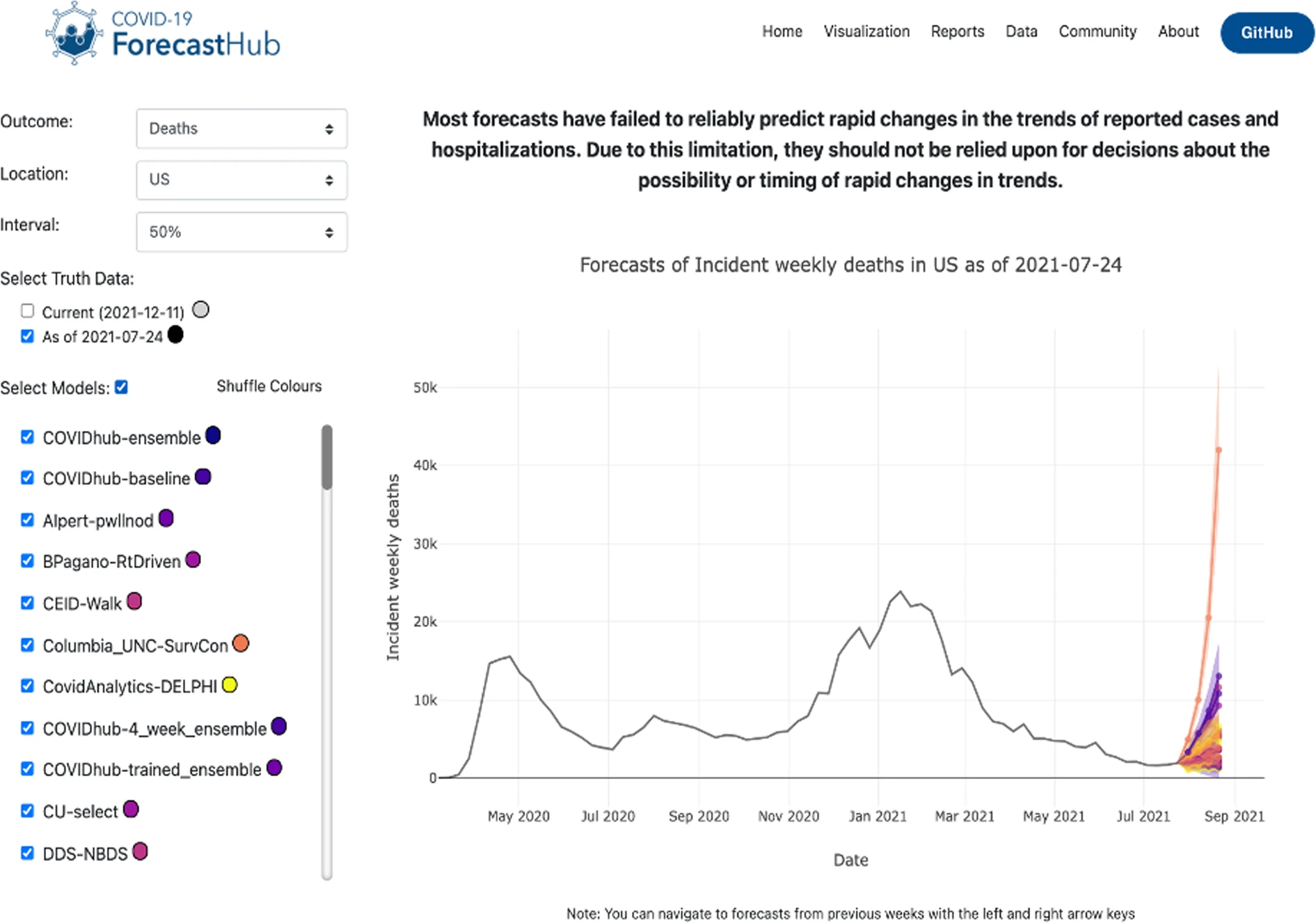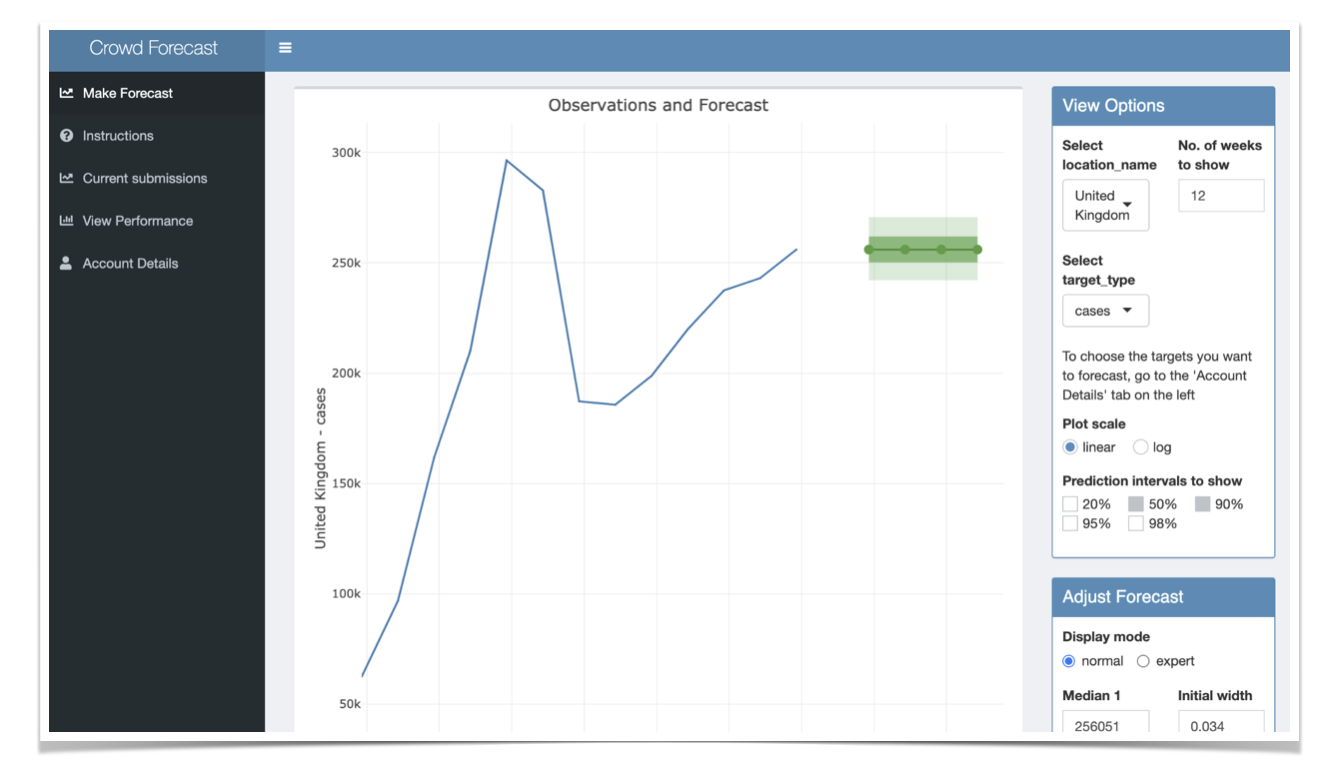Introduction to the spectrum of forecasting models
Understanding, evaluating, and improving forecasts of infectious disease burden
Different types of models

- We can classify models by the level of mechanism they include
- All of the model types we will introduce in the next few slides have been used for COVID-19 forecasting (the US and/or European COVID-19 forecast hub)
NOTE: level of mechanism \(\neq\) model complexity

Complex agent-based models
Conceptually probably the closest to meteorological forecasting, if with much less real-time data.

Compartmental models
Aim to capture relevant mechanisms but without going to the individual level.

Semi-mechanistic models
- Include some epidemiological mechanism (e.g. SIR or the renewal equation)
- Add a nonmechanistic time component inspired by statistical models (e.g. random walk)
- e.g., the model we have worked with so far

Statistical models
- Models that don’t include any epidemiological background e.g. ARIMA; also called time-series models
- The random walk model when used on its own (without going via \(R_t\)) is called a stochastic volatility model


Other models
- Expert or crowd opinion
- Machine learning
- …
Your Turn
- Load forecasts from three models of different levels of mechanism and statistical complexity.
- Evaluate the forecasts using proper scoring rules
Introduction to the spectrum of forecasting models



